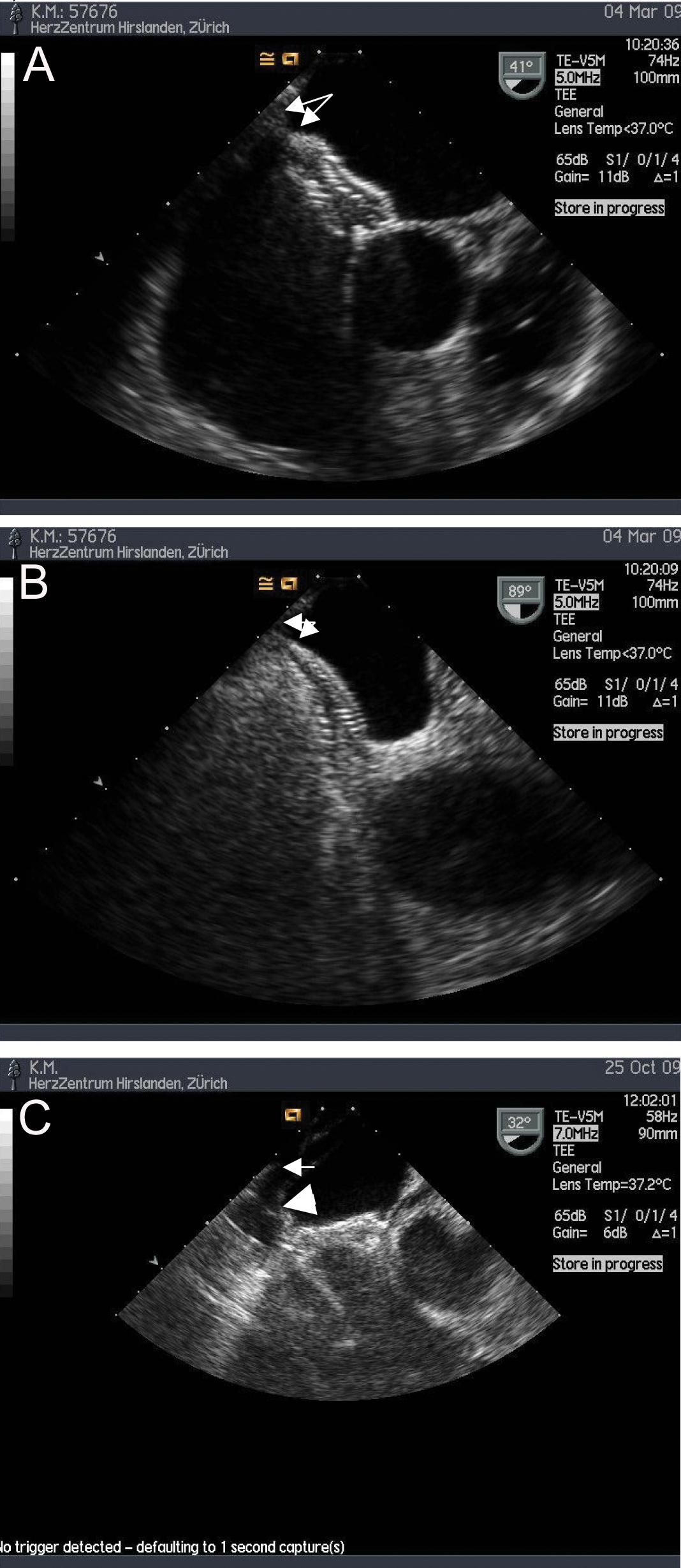
Figure 1. (A) and (B) Intra-interventional TEE showing respective positions of device edges and atrial wall (arrows). (C) Large arrowhead showing ruptured left atrial wall, small arrow showing pericardium.
| Cardiology Research, ISSN 1923-2829 print, 1923-2837 online, Open Access |
| Article copyright, the authors; Journal compilation copyright, Cardiol Res and Elmer Press Inc |
| Journal website https://www.cardiologyres.org |
Original Article
Volume 2, Number 1, February 2011, pages 7-15
Closure of Interatrial Septal Communications: Adverse Events and Lessons Learned
Figures


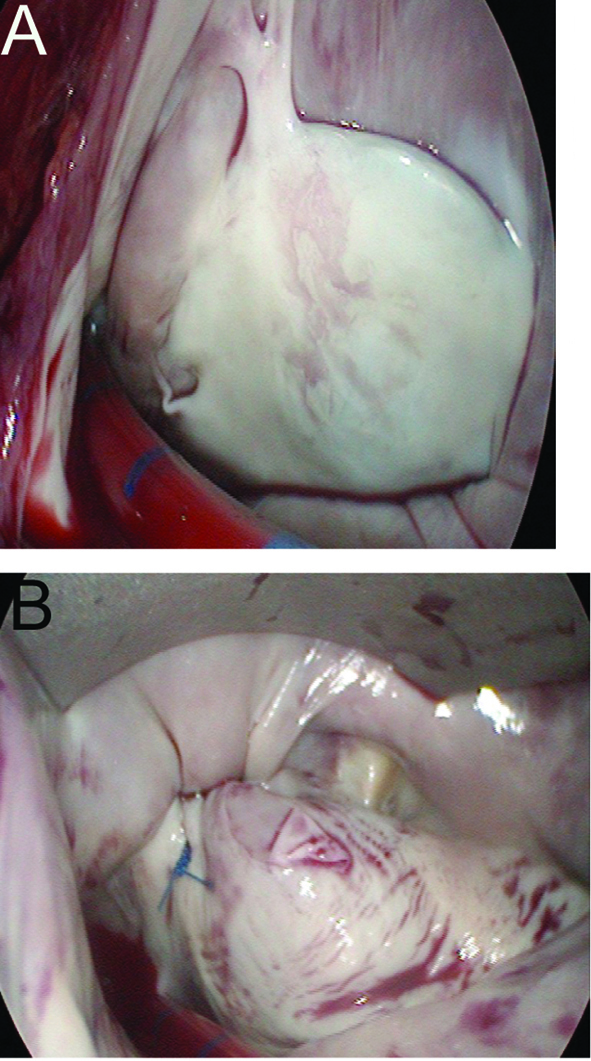

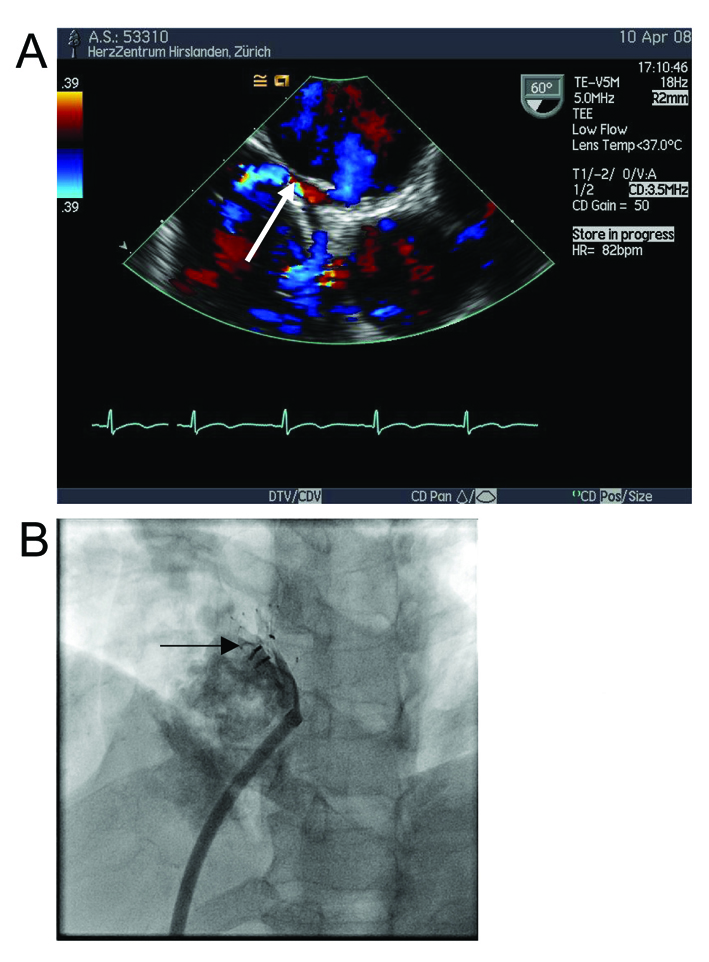
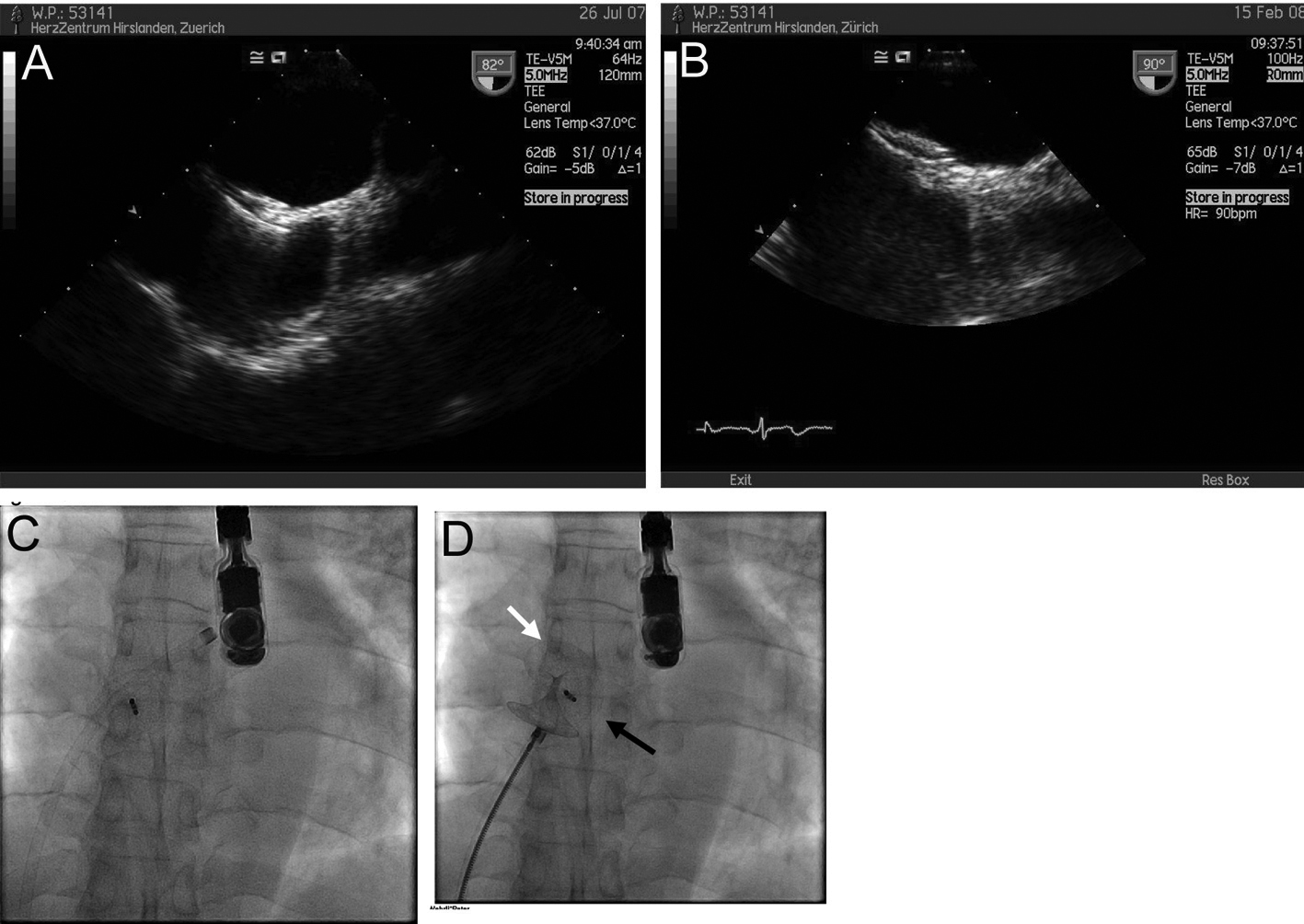
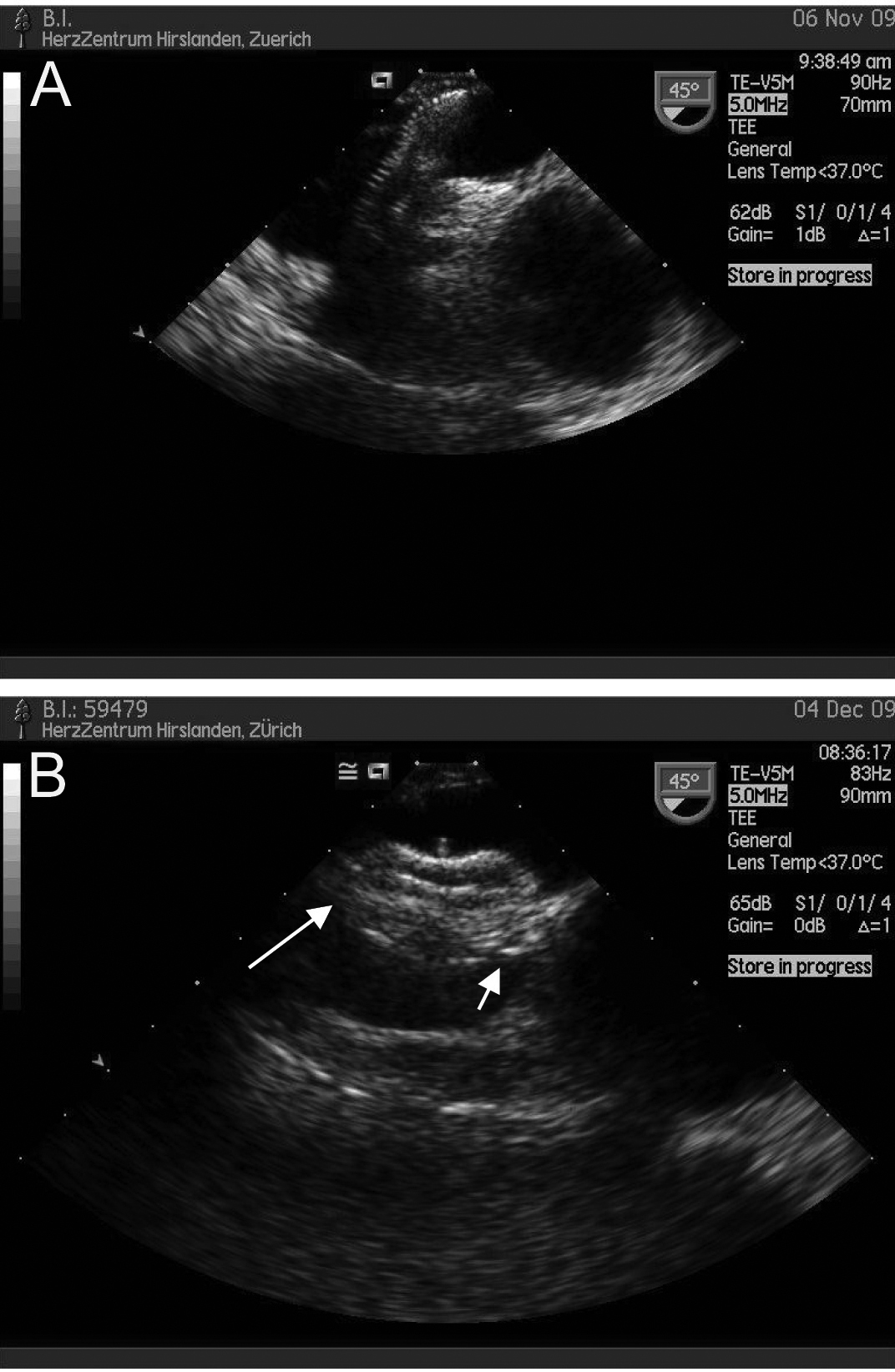

Tables
| Patients | N = 112 |
|---|---|
| ASD: atrial septal defect | |
| IASC: interatrial septal communication | |
| PFO: patent foramen ovale | |
| Device: A = Amplatzer®, C = Atriasept Cardia®, F= Occlutec Figulla®, P = Premere®, S = Swissimplant Solysafe® | |
| Age in years | 55.2 ± 14.9 (21 - 83) |
| Gender | 55 males, 57 females |
| Months since implantation | 22.4 ± 13.4 (1 - 60) |
| Type of IASC | 112 PFO, 14 ASD |
| Type of device implanted | A = 46, F = 21, C = 23, S = 14, P = 8 |
| Major AE | Not included | |
|---|---|---|
| Some AE listed on the right hand column are not included in the computing because it is not clear whether they necessitated hospitalizations etc. We have classified other events (residual shunts and “redos”) as unsuccessful or partially successful, in analogy to our 3 cases. | ||
| Majunke et al [1] Total major AE: 15/641 = 2.3% | Early: 2 embolizations, surgery 1 residual shunting, percutaneous closure unsuccessful, surgery 1 sudden death After 30 days: 2 embolizations and percutaneous retrieval 2 embolizations, surgery 3 surgery for atrial roof erosion 1 major stroke 1 peripheral embolization and percutaneous retrieval 2 surgery for residual shunt | 4 Heart failure 3 Minor strokes or TIA 1 pericardiocentesis 1 atrial thrombus formation 10 percutaneous closure for residual shunt or several defects |
| Wahl et al [2] Total major AE: 9/525 = 1.7% | Early: 5 embolization and percutaneous retrieval 3 vascular access problems 1 retroperitoneal hematoma | 2 pericardiocentesis 4 atrial thrombus formation 16 repeated closure because of residual shunt or new defects |